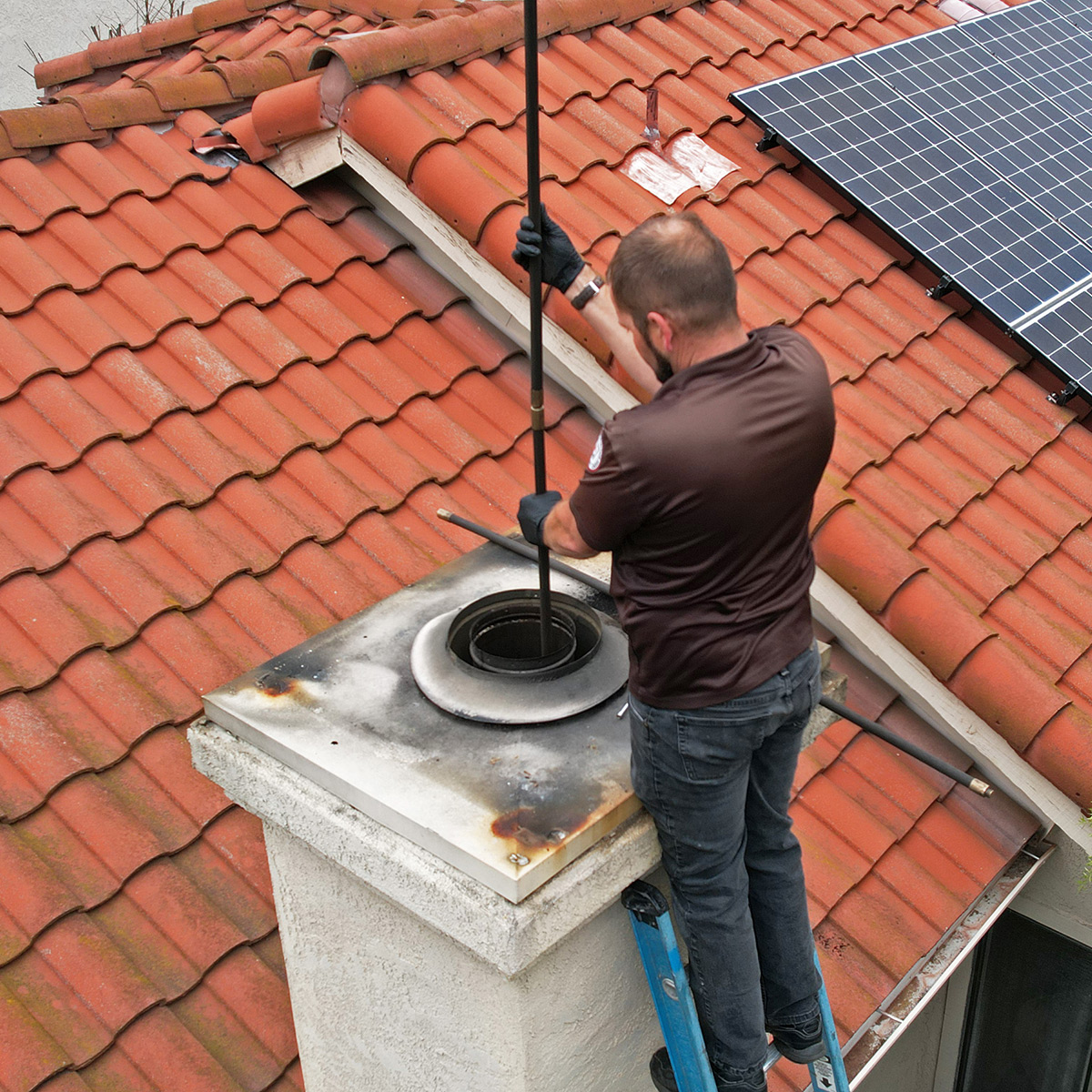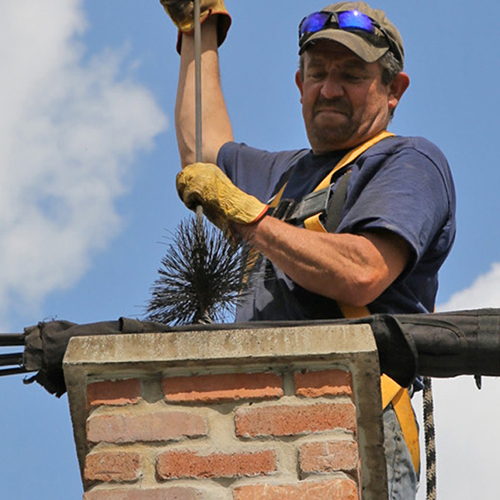Chimney Safety First: Premier Chimney Clean San Jose Services Unveiled
Chimney Safety First: Premier Chimney Clean San Jose Services Unveiled
Blog Article
Smokeshaft Cleaning: A Step-by-Step Overview to Maintaining a Healthy And Balanced Fireplace
Keeping a healthy fireplace is critical for the safety and performance of your home. Regular chimney cleansing is an important part of this upkeep routine. In this detailed overview, we will certainly provide you with in-depth directions on how to correctly clean your smokeshaft, making sure that it functions optimally and minimizes the risk of fire hazards. By following these standards, you will discover just how to collect the necessary tools, do a visual assessment, clear particles and accumulation, sweep the smokeshaft, and complete the last steps for recurring maintenance. With a professional strategy and attention to detail, you can with confidence deal with your fireplace and appreciate its warmth and convenience for years to come.
Collecting the Essential Tools
To begin the procedure of chimney cleaning, the very first step is to collect all the needed devices. Having the right devices at hand makes sure a safe and efficient cleaning process. The crucial devices for smokeshaft cleansing include a chimney brush, a ladder, ground cloth or plastic sheets, a flashlight, handwear covers, and a dust mask.
The chimney brush is the key tool utilized to get rid of soot and creosote buildup from the flue - Chimney Clean San Jose. It is essential to pick a brush that matches the dimension and shape of your chimney.
Ground cloth or plastic sheets are essential for protecting the surrounding location from dirt and particles. They aid make and consist of the mess cleaning easier. A flashlight is necessary for evaluating the chimney's inside for any type of indications of damage or obstructions. Handwear covers are necessary to shield your hands from soot and various other unsafe materials, while a dirt mask aids prevent the inhalation of debris.
Doing an Aesthetic Assessment

Making use of a flashlight, thoroughly check out the indoor walls of the chimney for any type of indications of damage, such as cracks, loose blocks, or mortar deterioration. These concerns can jeopardize the chimney's architectural integrity and position a major safety risk. In addition, look for any signs of water damages, such as staining or efflorescence, as this can indicate a leaky chimney cap or flashing.
Next, inspect the chimney flue for any obstructions. Look for the presence of nesting materials, leaves, or debris that may have built up gradually (Chimney Clean San Jose). These blockages can limit air flow, boost the threat of carbon monoxide gas accumulation, and impede the smokeshaft's capacity to properly air vent smoke
Throughout the visual evaluation, pay close interest to the chimney crown, which is the top surface that safeguards the chimney from moisture. Look for cracks or missing pieces in the crown, as these can enable water to go into the chimney and trigger substantial damages.
Clearing Particles and Build-up
After finishing the aesthetic examination, the following step in chimney cleansing includes cleaning debris and build-up to make certain the correct functioning of the fire place. Gradually, debris such as fallen leaves, twigs, and pet nests can collect in the chimney, blocking the flow of air and creating prospective fire hazards. In addition, the accumulation of creosote, a tar-like material, is a typical problem in smokeshafts. Creosote is developed when wood or fossil gas are melted, and if not removed regularly, it can result in chimney fires.
To clear particles and accumulation, it is essential to use the right devices and techniques. A smokeshaft brush, especially created for this purpose, is utilized to remove loosened debris and creosote from the smokeshaft walls. It is necessary to select a brush that matches the size of your chimney to make certain efficient cleansing. Prior to starting the cleansing process, make certain to cover the fire place open up to prevent debris from coming under the room.
To start, place the brush into the chimney and move it up and down, scrubbing the walls to displace any kind of particles or creosote. When the brushing is total, utilize a vacuum cleaner or a smokeshaft brush expansion to get rid of the dislodged particles from the fireplace.

Sweeping the Chimney
The sweeping of the chimney is a vital action in keeping a healthy and balanced fire place. Over time, soot, creosote, and other debris can collect in the smokeshaft, blocking the flow of air and potentially creating a dangerous build-up of flammable products. Regular chimney brushing up not only ensures proper ventilation yet likewise stops the risk of smokeshaft fires.
When it comes to chimney sweeping, it is very suggested to hire a specialist chimney sweep. These specialists have the understanding and tools needed to safely and properly remove the click to read more accumulated particles from your chimney.
It is important to keep in mind that the frequency of chimney sweeping relies on a number of aspects, such as the sort of fuel made use of, the amount of usage, and the kind of smokeshaft. As a general general rule, it is suggested find out this here to have your smokeshaft examined and brushed up at least yearly.
Last Steps and Maintenance
After finishing the smokeshaft sweeping procedure, the first action in the final upkeep is to inspect the smokeshaft cap and stimulate arrestor. These parts avoid debris, pets, and rainwater from going into the smokeshaft.

Check the within the fireplace for any type of indicators of wear and tear, such as splits, loosened bricks, or harmed mortar. These issues can impact article source the architectural integrity and security of the fire place. If any issues are identified, seek advice from a professional smokeshaft move or mason to address them without delay.
Finally, think about setting up carbon monoxide detectors near the fireplace and throughout your home. These devices can discover the existence of this harmful gas, offering an early warning system in instance of a smokeshaft breakdown. Consistently examine and change the batteries in these detectors to guarantee their efficiency.
Final Thought
In verdict, complying with a detailed guide for chimney cleansing is vital in keeping a healthy fireplace. By collecting the needed tools, doing a visual examination, getting rid of debris and build-up, and brushing up the chimney, home owners can make sure the security and efficiency of their fire place.
The vital tools for smokeshaft cleaning include a smokeshaft brush, a ladder, drop towels or plastic sheets, a flashlight, handwear covers, and a dirt mask.
A chimney brush, particularly developed for this purpose, is used to remove loose debris and creosote from the chimney walls. Regular smokeshaft sweeping not just guarantees correct ventilation however also protects against the risk of smokeshaft fires.
When it comes to chimney sweeping, it is extremely advised to hire a specialist chimney sweep. After finishing the chimney sweeping procedure, the initial step in the last maintenance is to check the chimney cap and stimulate arrestor.
Report this page